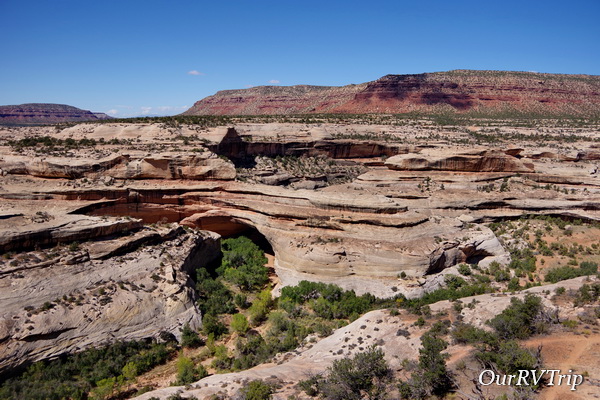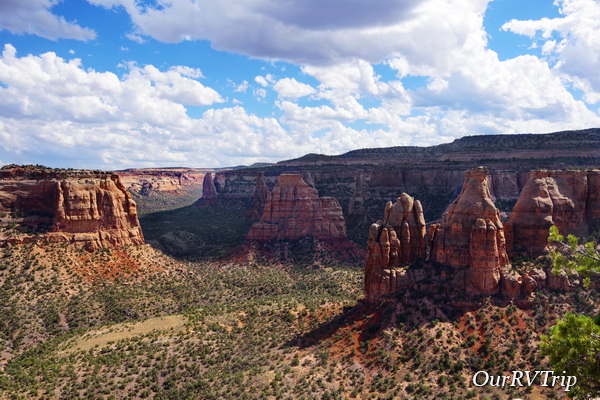
A Day of Monuments
Hey Guys! Since we’re on a National Park Tour we decided to cram three National Monuments into one very long day. Three. I’m not sure that was one of our better ideas…but we did it and we all survived…barely. Ha!
Our first stop was in the Shash Jaa Unit of Bears Ears National Monument. Bears Ears is made up of two different units and is bursting with ancestral dwellings, rock art, and amazing rock formations. The whole National Monument is contained within about 228,000 acres. The Shash Jaa Unit has some incredible cliff dwellings tucked into the sides of cliffs and in caves.
Bears Ears NM is so big…and we were trying to squish three different National Monuments into one day…so we had to pick and choose what we made time for during this visit. My main interest was a place I’d found out about several years ago…House on Fire. The trick is to get there during the right time of day so that the sun bounces off the canyon floor and hits the cliff dwelling giving it a fiery glow. We got there too early and joined the small group who were also there to see the phenomenon of House on Fire. While we waited I took pictures from several angles at several different times. I took some with my good camera…I took some with my phone camera…I took some up-close…far away… You get the point. I was covering all of my bases trying to capture the amazing effect I’d seen on the interwebs. I got it! I had several different pictures that I deemed worthy. And, honestly, my phone camera picked up the effect just as good as my expensive camera.
Bears Ears National Monument is a newer National Park. There’s not an official visitor center yet. It seemed to us that the area BLM Rangers and National Park Service Rangers were all kind of sharing the stewardship of this particular park. We hope to one day go back and explore more of this amazing park. BTW…Bears Ears NM is named for the two towering buttes that stand out against the surrounding landscape. You can see them in the picture on the right.
Natural Bridges National Monument was our second stop of the day. This might be a good time to tell you the difference between an arch and a natural bridge. An arch has to have an opening of three feet and is the remnants of geological stone formations such as fins, ridges, or rock cliffs. A natural bridge is formed when running water cuts through a canyon wall. Natural bridges are actually more rare than arches. Another noteworthy difference is that bridges tend to be lower in canyons while arches are usually higher up and easier to spot. Both are formed from different types of erosional forces.
Natural Bridges National Monument is the home to three of the world’s largest natural bridges and all of them are within the same canyon. Sipapu Bridge is actually taller than the National Capitol Building. There are short but steep hikes down to each of the three bridges. You can see them from some well placed viewpoints as well. We’d already done some hiking this day and the boys were starting to make noise about lunch, so we opted to gaze at the natural bridges from afar instead of hiking down to each of them.
Our last stop of the day was Hovenweep National Monument. This National Monument tells the story (or at least what we know of the story) of a group now known as the Ancestral Puebloan people. There have been people living in and around Little Ruin Canyon for thousands of years. They started out as hunter/gatherers and somewhere around AD 900, settlements began appearing along the cliff walls and around the top of the canyon. In the 1200s, the Ancestral Puebloans started adding pit houses, kivas, and pueblos to the community that was now around 2,500 members strong.
Most of the ruins you can see standing today were built in the mid to late 1200s. This little community was just one in a whole system of settlements. Each community was a days walk to the next community. There’s a bit of a puzzle as to why so many stone towers were built in this particular location and why they were placed in sometimes precarious positions along the canyon rim or within the canyon. No one knows why the Ancestral Puebloan people seemed to suddenly disappear or why they left or even where they went.
We’ve always enjoyed learning about our country’s history. Some of our favorite National Park Units tell the story of the first people to call our country home. We had several great conversations as we walked through these ancient dwellings. Where did they go…why did they leave…why did they build the towers? Sometimes we leave a National Park with more questions than when we got there and that’s ok. One of the reasons we go to National Parks is to learn and sometimes you have to learn what questions to ask before you can find the answer.
Well, Guys…I think I’m going to hit the pause button again on the Moab area adventures. I’ve got more to share with you so stay tuned!
See y’all down the road!
#NationalParkTour
















